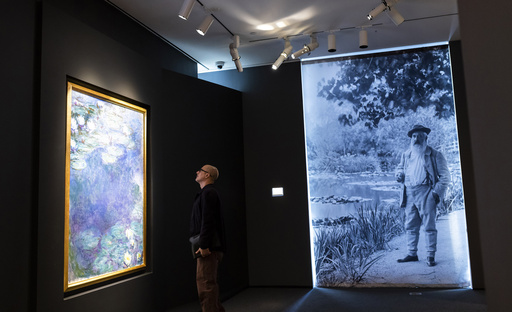
Visiting almost any grocery store in the country, you can usually snag a banana for under a dollar. However, a banana affixed to a wall with duct tape is set to auction for over $1 million at Sotheby’s in New York.
The artwork, titled “Comedian,” comes from Italian artist Maurizio Cattelan and features a banana taped to a white wall with silver tape. It made waves when it was first presented at the Art Basel Miami Beach fair in 2019, where it generated considerable buzz and excitement.
Many debated its purpose: was it a jokester’s gag or a critique of the contemporary art sphere? The installation was famously disrupted when another artist removed the banana and consumed it, prompting the introduction of a replacement. The popularity was so intense that “Comedian” was taken out of public view; still, three versions sold for prices between $120,000 and $150,000, according to Perrotin gallery.
Now, this conceptual piece is estimated to fetch between $1 million to $1.5 million when it goes under the hammer on November 20 at Sotheby’s. David Galperin, heading contemporary art at Sotheby’s, describes the piece as both thought-provoking and significant.
“Cattelan is essentially holding up a mirror to the modern art market, challenging us to question how we assign worth to artwork and what we categorize as art,” Galperin explained.
Bidders should note that the banana for sale is not the same one displayed at the Miami fair; those bananas have since been used up. Sotheby’s clarified that the fruit was intended to be replaced regularly, as well as the fixture holding it.
Purchasing Cattelan’s “Comedian” provides the buyer not with a banana, but a certificate of authenticity that permits them to recreate the artwork on their wall, designating it as an original piece by Maurizio Cattelan, Galperin added.
Cattelan’s title hints at a whimsical tone, suggesting a lack of seriousness in the work, but Chloé Cooper Jones, an assistant professor at Columbia University School of the Arts, encourages a deeper reflection on its context.
Presented at an event attended by affluent art enthusiasts, “Comedian” was likely designed to make a statement among collectors, nudging them towards investing in absurdity. If the piece serves merely as a critique of the elite, Cooper Jones argues it may not offer much substance.
However, she believes that Cattelan aims to provoke critical thought beyond mere satire against wealth. Known as a “trickster artist,” his work often juxtaposes humor with serious themes. “He challenges us to confront our darkest historical truths and introspections,” she noted.
The banana, in particular, carries a complex history, intertwined with issues of imperialism, labor exploitation, and corporate interests. As Cooper Jones pointed out, “A banana stands as an ideal, simplified representation of global trade and its inherent abuses.” If “Comedian” encourages introspection regarding our complicity in the consumption of everyday items, she views it as a more meaningful conversation starter.
Interestingly, “Comedian” is set to be auctioned around the same time that Sotheby’s is also putting a painting from Claude Monet’s “Water Lilies” series on the block, which is anticipated to go for about $60 million.
When Galperin was asked to compare Cattelan’s banana with Monet’s renowned “Nymphéas,” he reflected on how Impressionism was regarded when it first emerged. “Throughout the last two centuries, every significant work of art has faced initial discomfort and questioning,” he stated.
